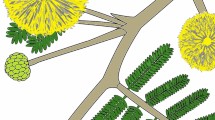Abstract
Ficus religiosa has been extensively used in traditional medicine for the treatment of gonorrhea, diarrhea, dysentery, leucorrhea, menorrhagia, vaginal and other urogenital disorders, haemorrhoids and ulcers, but limited information is available regarding their effect on behavior. The present study was designed to demonstrate the effect of F. religiosa leaf extract on the selected behavioral aspect of albino mice. Four weeks old albino mice of both genders were orally treated with 50 mg ml−1 solvent kg−1 body weight of F. religiosa leaf extract for seven days while the control animals were treated with saline (0.9% NaCl) solution. A battery of neurological tests (rota rod, open field, light dark box, elevated plus maze and novel object recognition) was conducted in all subjects. Female mice treated with F. religiosa leaf extract had significantly reduced rota rod performance in comparison with the control. Male mice treated with leaf extract had significantly reduced transition frequency during light dark box test while during elevated plus maze test, male mice remained mobile for less time and had reduced rotations than their control group. Male mice treated with leaf extract had significantly reduced line crossing and failed to recognize the old object during the second trial of novel object recognition test. Our results indicated that oral supplementation of F. religiosa leaf extract for seven days had significantly reduced the exploratory behavior and object recognition capacity of male mice and neuromuscular coordination of females, indicating gender specific effects of the applied ethanolic leaf extract.

Similar content being viewed by others
References
Aftab MN, Akram IN, Khosa T, Zahra SQ, Bashir I, Ashiq MN, Iqbal F (2018) Oral supplementation of Lanthanum Zirconate nanoparticles moderately affected behavior but drastically disturbed leukocyte count, serum cholesterol levels and antioxidant parameters from vital organs of albino mice in a gender specific manner. J Metabol Brain Dis 33(5):1421–1429. https://doi.org/10.1007/s11011-018-0248-9
Aiyegoro OA, Okoh AL (2009) Use of bioactive plant products in combination with standard antibiotics: implications in antimicrobial chemotherapy. J Med Plant 3:1147–1152
Bhangale JO, Acharya NS, Acharya SR (2016) Protective effect of Ficus religiosa (L.) against 3-nitropropionic acid induced Huntington disease. Orient Pharm Exp Med 16:165–174. https://doi.org/10.1007/s13596-016-0237-7
Derks NAV, Krugers HJ, Hoogenraad CC, Joëls M, Sarabdjitsingh RS (2017) Effects of early life stress on rodent hippocampal synaptic plasticity: a systematic review. Curr Opin Behav Sci 14:155–166. https://doi.org/10.1016/j.cobeha.2017.03.005
Devi WB, Sengottuvela S, Haja SS, Lalitha V, Sivakumar T (2011) Memory enhancing activity of Ficus religiosa in rodents. IJRAP 2(3):834–838
Gregory M, Divya B, Mary RA, Viji MMJ, Kalaichelvan VK, Palanivel V (2013) Anti-ulcer activity of Ficus religiosa leaf ethanolic extract. Asi Pac J Trop Biomed 3(7):554–556. https://doi.org/10.1016/S2221-1691(13)60112-4
Iqbal F, Hoeger H, Lubec G, Bodamer O (2017) Biochemical and behavioral phenotype of AGAT and GAMT deficient mice following long-term Creatine monohydrate supplementation. J Metabol Brain Dis 32(6):1951–1961. https://doi.org/10.1007/s11011-017-0092-3
Jung HW, Son HY, Minh CV, Kim YH, Park YK (2008) Methanol extract of Ficus leaf inhibits the production of nitric oxide and proinflammatory cytokines in LPS-stimulated microglia via the MAPK pathway. Phytother Res 22(8):1064. https://doi.org/10.1002/ptr.2442
Kaur A, Rana AC, Tiwari V, Sharma R, Kumar S (2011) Review on ethanomedicinal and pharmacological properties of Ficus religiosa. J Appl Pharm Sci 1(08):6–11
Khosa T, Faiz A, Haider A, Ashiq MN, Iqbal F (2019) Synthesis and characterization of newly synthesized neodymium zirconate zinc sulfide nano composite and its effect on selected aspects of albino mice behavior. Naunyn Schmiedebergs Arch Pharmacol 393(4):717–725. https://doi.org/10.1007/s00210-019-01787-z
Kunwar RM, Bussmann RW (2006) Ficus (fig) species in Nepal: a review of diversity and indigenous uses. Lyonia 11:85–97
Lever C, Burton S, O keefe J (2006) Rearing on hind legs, environmental novelty, and the hippocampal formation. Rev Neurosci 17(1–2):111–133
Makhija IK, Sharma IP, Khamar D (2010) Phytochemistry and pharmacological properties of Ficus religiosa: an overview. Ann Biol Res 1(4):171–118
Manimozhi DM, Sankaranarayanan S, Kumar GS (2012) Effect of different extracts of stem bark of Ficus species on multidrug resistant pathogenic bacteria. IJSPR 3(7):2122–2129
Paliwal D, Murti K, Sangwan Y, Kaushik M, Kiran D (2011) Preliminary and pharmacological profile of Ficus religiosa L.: an overview. Pharmacologyonline 3:387–395
Patil MS, Patil CR, Patil SW, Jadhav RB (2011) Anticonvulsant activity of aqueous root extract of Ficus religiosa. J Ethanopharmacol 133:92–96
Ramakrishnaiah G, Hariprasad T (2012) In vitro antimicrobial activity of leaves and bark extracts of Ficus religiosa. IRJP 3(9):178–179
Roy KH, Kumar S, Sarkar S (2009) Wound healing potential of leaf extracts of Ficus religiosa on Wistar albino strain rats. Int J Pharm Tech Res 1:506–508
Samson AL, Lining J, Kim A, Zhang H, Shenpeng R, Jessica AA, Sharelle A, Christopher G, Shaun P, Simone M (2015) MouseMove: an open source program for semi-automated analysis of movement and cognitive testing in rodents. Sci Rep 5:16171. https://doi.org/10.1038/srep16171
Sawarkar HA, Singh MK, Pandey AK, Biswas D (2011) In vitro anthelmintic activity of Ficus bengalhensis, Ficus caria and Ficus religiosa: a comparative anthelmintic activity. Int J Pharm Tech Res 3:152–153
Sirisha N, Sreenivasulu M, Sangeeta K, Chetty CM (2010) Antioxidant properties of Ficus species. A review. IJPR 3:2179–2182
Supriya J, Harshita G (2013) Standardization and antimicrobial activity of Ficus religiosa. Int Res J Pharm 4(7):114–117
Vinutha B, Parshanth D, Salma K, Sreeja SL (2007) Screening of selected Indian medicinal plants for acetylchlinesterase inhibitory activity. J Ethnopharmacol 109:359–363
Zahra K, Khan MA, Iqbal F (2015) Oral supplementation of Ocimum basilicum enhances the locomotory, exploratory and learning behavior of adult male albino mice. Neurol Sci 36(1):73–78. https://doi.org/10.1007/s10072-014-1913-3
Author information
Authors and Affiliations
Contributions
Furhan Iqbal has designed, supervised the study and revised the manuscript. Muhammad Latif has prepared the leaf extract and prepared the manuscript, Naheed Akhtar, Shahid Iqbal and Faisal Shahzad has performed the lab experiments, gathered the data and analyzed it.
Corresponding author
Ethics declarations
Conflict of interest
Authors declare that there are no competing interests.
Rights and permissions
About this article
Cite this article
Akhtar, N., Iqbal, S., Shahzad, M.F. et al. Oral supplementation of Ficus religiosa leaf extract adversely affects the selected behavioral aspects of male albino mice. Biologia 75, 2295–2300 (2020). https://doi.org/10.2478/s11756-020-00492-0
Received:
Accepted:
Published:
Issue Date:
DOI: https://doi.org/10.2478/s11756-020-00492-0




